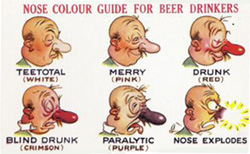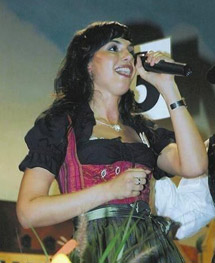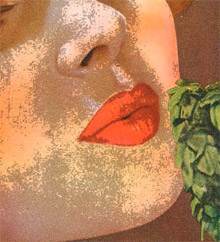hops
Hold your nose, then sip
 OK, not necessarily something you want to do in public. But both a good way to learn a little more about the beer you are drinking and your own senses.
OK, not necessarily something you want to do in public. But both a good way to learn a little more about the beer you are drinking and your own senses.
I was reminded of the value of tasting without first smelling while grinding through an academic paper related to hops (I try to tackle several a day because I have quite a collection). In this case the researchers were evaluating the bitterness intensity of various samples, and panelists wore nose plugs.
No need to do that at home. A simple squeeze will do. Take a sip without the benefit of “olfactory influences,” then one with. Or vice versa. Doesn’t even have to be a hop-heavy beer, although the results can be pretty interesting with a dry-hopped one.
In search of a bigger, maybe hoppier, high
Today’s Wall Street Journal explains the “current flavor boom.”
“The more you taste something, the more you need to taste it,” says Mitchell Davis, vice president of the James Beard Foundation, a New York-based non-profit that works to preserve American culinary heritage. “You always need something spicier, something more, a bigger high.”
What does this tell us about bigger, bolder, more intense, hoppier beers?
Go read the story about how “bold is replacing boring.” Connect the dots. I’d love to join the conversation but we’re boarding a plane. Tomorrow I’ll be visiting a hop yard.
What would you ask a hop queen?
 No, seriously.
No, seriously.
Next week judges stream into Chicago to taste their way through 3,500 or so entrants in the World Beer Cup and soon they will be joined by thousands of brewing industry members for the Craft Brewers Conference.
I expect only the toughest will make it up Saturday morning for “Brewing Belgian White and Wit Beers,” the panel I’ll be moderating. Fortunately there will be many more exciting moments. First up, Wednesday afternoon is a chance to meet the Hallertau hop queen, Mona Euringer. She’ll be in Chicago along with members of the German Hop Growers Association.
She’ll give a brief talk about life on a hop farm and also be around for the trade show Thursday and Friday. Last year the hop growers caught some grief when it was suggested Nicol Frankl, the previous hop queen, was invited along only because she has a pretty face.
Not true. “To be elected hop queen, you have to have grown up and helped work on a hop farm all of your life, you have to know hops, hop farming, and all the machinery involved,” said Eric Toft, brewmaster at Private Landbrauerei Schönram, who doubles as a representative of the hop growers.
I promise to find out just how much she knows. So if you have a question you want asked please leave it as a comment. As long as it’s not rude I’ll ask her.
The hop growers will also be serving a variety of beers. Toft wrote the recipes and Victory Brewing in Pennsylvania made the beers. They will include three different Belgian-style pale ales — each brewed with a single German aroma hop varieties: Hallertauer Mittelfruh, Smaragd, Hersbrucker — a new Bavarian-style pale ale, and a tripel hopped with Saphir.
I promise to ask questions first and drink beers later.
Hops – No. 3 with a bullet
The brewers at BrewDog have made a list of their six favorite (or should that be favourite?) hops. You can see why co-founder James Watt has said, “We like to think of what we do as U.S.-inspired Scottish craft brewing.”
1. Chinook
2. Amarillo
3. Nelson Sauvin
4. Bramling Cross
5. Simcoe
6. First Gold
 Three hops grown in the U.S. Northwest (Chinook, Amarillo and Simcoe), two in the U.K. (Bramling Cross and First Gold) and one from New Zealand. Nelson Sauvin, released only in 2000, seems to be a hop du jour.
Three hops grown in the U.S. Northwest (Chinook, Amarillo and Simcoe), two in the U.K. (Bramling Cross and First Gold) and one from New Zealand. Nelson Sauvin, released only in 2000, seems to be a hop du jour.
Its character has been likened to Sauvignon Blanc, the grape and wine variety, and New Zealand Hops Limited emphasizes its cutting edge attributes.
From the brewer’s notes: “The fruitiness may be a little overpowering for the un-initiated, however those with a penchant for bold hop character will find several applications for this true brewer’s hop.”
And from the suggested applications: “Very much at home in the new-world styles such as American Pale Ale and Super Premiums. This hop is considered by some as extreme and certainly makes it presence felt in specialty craft and seasonal beers gaining an international reputation.”